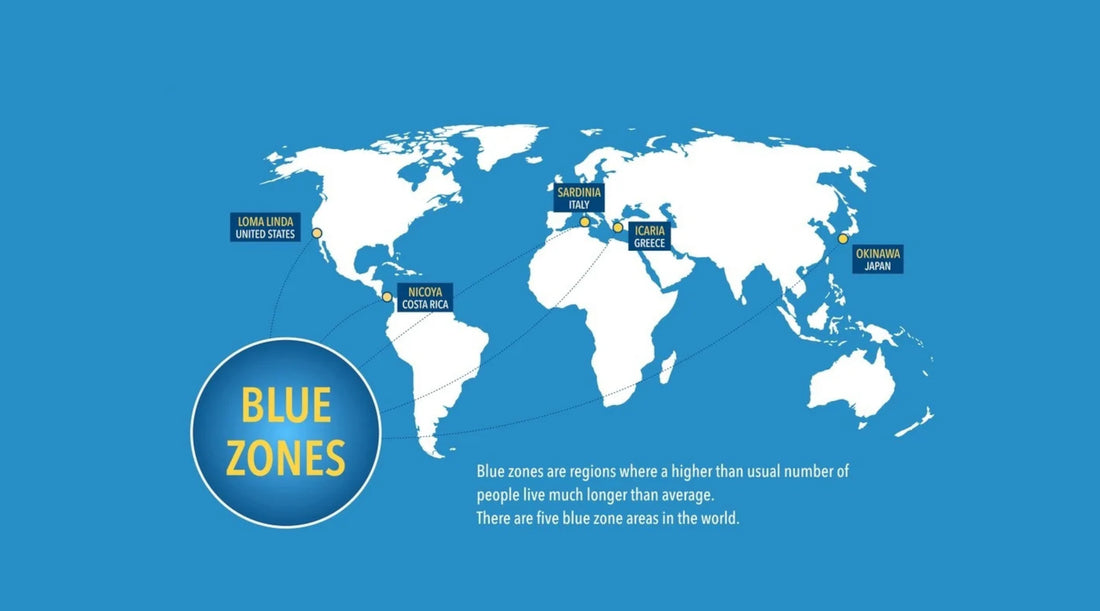Plant-Centric Nutrition in the Blue Zones
In the pursuit of longevity, the Blue Zones have emerged as beacons of inspiration, revealing the secrets behind the remarkable lifespans of their inhabitants, who effortlessly breach the centenarian mark. These Blue Zones, scattered across the globe from Okinawa, Japan, to Sardinia, Italy, and Loma Linda, California, have one common thread that weaves through the fabric of their long and healthy lives: a focus on nutrition that transcends mere sustenance.
The Blue Zone Lifestyle:
The term "Blue Zone" was coined by researcher and National Geographic Fellow, Dan Buettner, who identified regions where people live longer, healthier lives compared to the global average. While genetics play a role, lifestyle factors, particularly dietary habits, have been found to be pivotal in the remarkable longevity of Blue Zone residents.
Plant-Powered Diets:
One of the defining features of Blue Zone nutrition is the emphasis on plant-based diets. Centenarians in these regions consume a variety of vegetables, fruits, legumes, and whole grains. The abundance of antioxidants, vitamins, and minerals found in plant-based foods contributes to overall well-being and has been linked to a lower risk of chronic diseases.
Moderate Caloric Intake:
Centenarians in Blue Zones are not known for overindulging; instead, they practice mindful eating and maintain a balanced, moderate caloric intake. This helps in preventing obesity and related health issues, promoting a sustainable and healthy lifestyle.
Lean Proteins:
While plant-based foods dominate the Blue Zone plate, lean proteins such as fish and legumes are also staples in their diets. These protein sources offer essential amino acids without the excessive saturated fats commonly found in meat-heavy diets, promoting cardiovascular health.
Good Fats:
Blue Zone residents incorporate healthy fats, such as those found in olive oil and nuts, into their diets. These monounsaturated fats have been associated with a lower risk of heart disease and contribute to the overall health and vitality of centenarians.
Social Dining:
The act of sharing meals is deeply ingrained in Blue Zone cultures. Socializing during meals not only enhances the enjoyment of food but also fosters a sense of community and belonging, positively impacting mental health—an often overlooked aspect of longevity.
Fasting Traditions:
Some Blue Zone communities practice intermittent fasting or have religious fasting traditions. These periodic breaks from regular eating patterns may contribute to metabolic health and have been linked to increased longevity.
Local and Seasonal Eating:
Blue Zone residents tend to consume locally sourced, seasonal foods. This not only supports the local economy but also ensures a diverse and nutrient-rich diet, as different seasons offer a variety of fruits, vegetables, and other food items.
Obviously, the longevity of centenarians in Blue Zones is a testament to the profound impact of lifestyle choices, particularly when it comes to nutrition. By adopting a plant-focused, balanced diet, practicing mindful eating, and embracing social dining, we can draw inspiration from these longevity hotspots to enhance our own well-being and potentially unlock the secrets to a longer, healthier life. As we navigate the complex landscape of health and nutrition, the wisdom of Blue Zone centenarians beckons us to savor the journey towards a thriving, fulfilling, and enduring existence.

